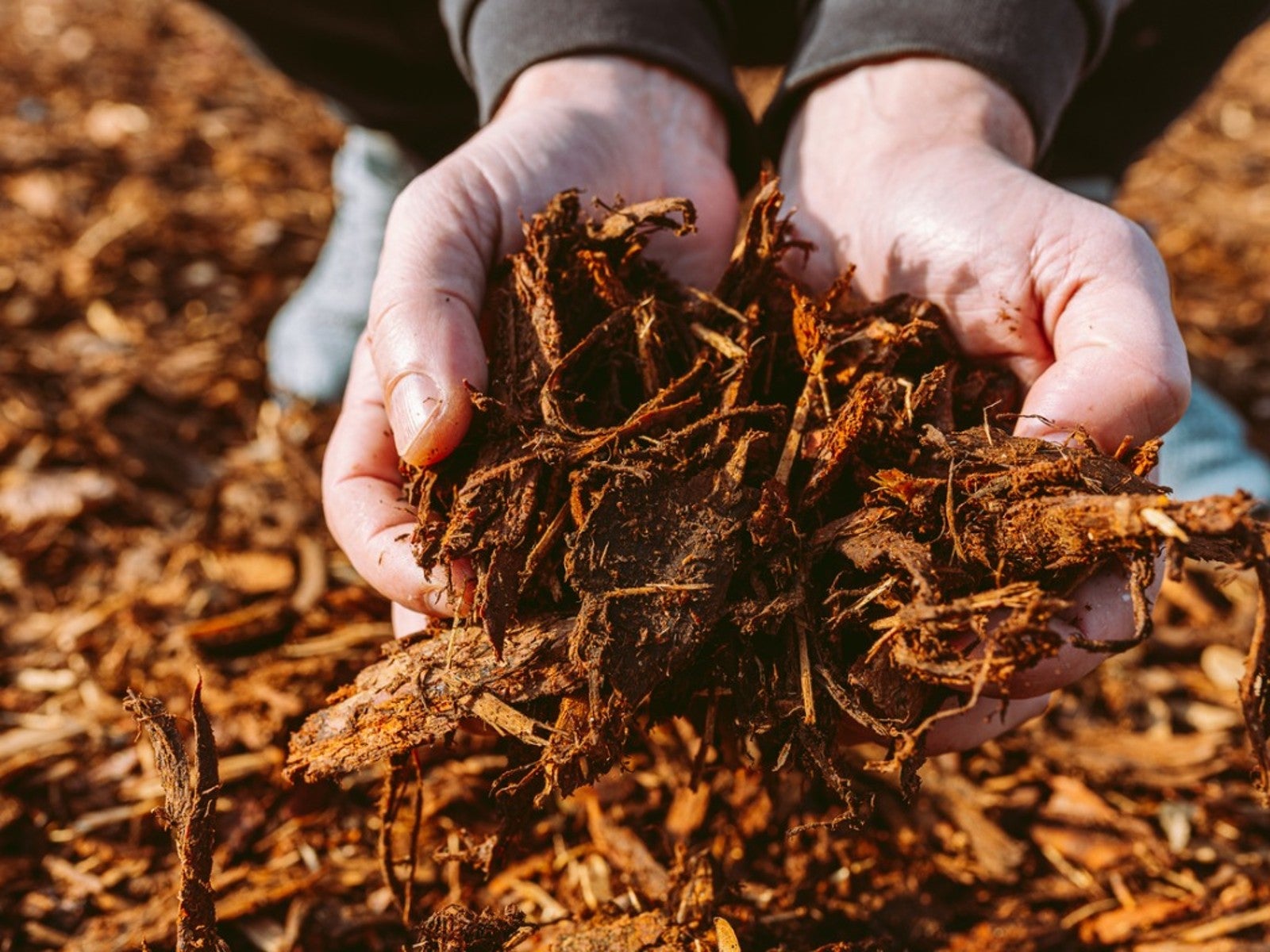Tips For Reusing Old Mulch


Mulch doesn’t last forever unless you use an inorganic, durable mulch, like stones or rubber. Natural mulches break down. They blow away in the wind and disperse in other ways. Deciding what to do with old mulch in spring means evaluating its current state and assessing the needs of your beds.
Can You Reuse Mulch?
You should be able to reuse mulch for at least a couple of years in your garden beds. Very durable, non-organic mulches should last many years. For instance, with pea gravel, you might only need to refresh it every few years.
Mulches made of wood break down and disperse more quickly, requiring more frequent refreshing or replacement. As long as your mulch pieces are still large enough and are not harboring diseases, you can reuse it in the spring. If the color has faded and you prefer something more vibrant, you might want to replace it.
How to Reuse Mulch in Spring
If you are planning to reuse mulch in the spring, take the time to move it aside to prepare the bed. Rake up the old mulch and set it aside. Till the soil in the bed and add any compost or other amendments it needs. This is also a good opportunity to check for signs of disease or mold in the mulch that would prohibit you from reusing it. Once you have prepared the soil for plantings, put your plants in the bed and reapply the mulch.
Don’t remove mulch from your beds until spring. Keeping mulch in place throughout the winter benefits the soil and any perennials in the bed. Mulch helps hold soil in place that might otherwise scatter in the wind or during storms. Mulch also protects plant roots and crowns from cold temperatures and holds some moisture in the soil.
How to Refresh Old Mulch
You can extend the life of your mulch by refreshing it rather than replacing it each year. Simply mix new mulch into the old mulch or use it to fill in thin spots. As long as you match the color reasonably well, this strategy will allow you to keep using the same mulch for at least a few years.
When Not to Reuse Mulch
While you probably don’t need to add new mulch every year, eventually it will need to be replaced. Don’t bother reusing mulch that has deteriorated to the point that the pieces are very small and barely distinguishable from soil. That means it’s time to get new mulch.
Gardening tips, videos, info and more delivered right to your inbox!
Sign up for the Gardening Know How newsletter today and receive a free copy of our e-book "How to Grow Delicious Tomatoes".
Another situation in which you should avoid using mulch again is if the plants in the bed have struggled with disease. In that case, your mulch may contain fungus or bacteria, and should be disposed of.
What Do You Do with Old Mulch That Isn’t Reusable?
Deciding what to do with old mulch depends on the situation. If you are not reusing it because it broke down too much, you can simply work the remaining pieces into the soil and apply fresh mulch. If the mulch still has fairly large pieces, it’s best to mix it into a compost pile before incorporating it into the soil.
If there was an issue of disease, rake up all of the mulch and dispose of it. Do not try to compost it or put it in another area of the garden. Use yard waste bags and dispose of it according to local regulations. Another reason to dispose of old mulch is if it was colored with a non-organic dye. You don’t want to work that into the soil, so collect it in bags and dispose of it.
Natural mulch does not have an indefinite lifespan, but it is definitely reusable. Evaluate your mulch each year and decide if you can reuse or if you need a refresh or complete replacement.
Summary: Non organic mulch lasts longer, but you can reuse and refresh old organic mulch each year if it’s still reasonably fresh and not diseased.

Mary Ellen Ellis has been gardening for over 20 years. With degrees in Chemistry and Biology, Mary Ellen's specialties are flowers, native plants, and herbs.